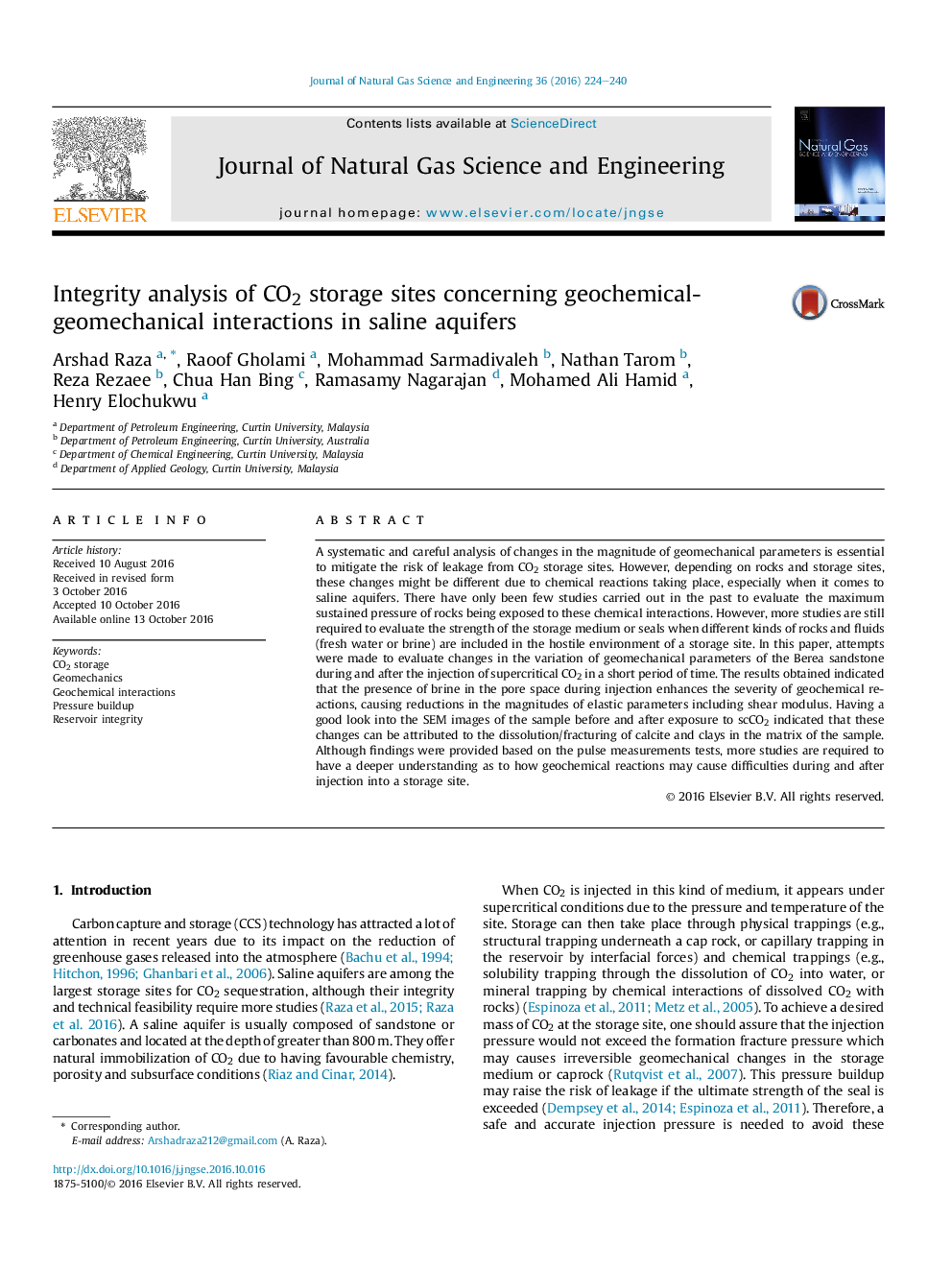| Article ID | Journal | Published Year | Pages | File Type |
|---|---|---|---|---|
| 5484820 | Journal of Natural Gas Science and Engineering | 2016 | 17 Pages |
Abstract
A systematic and careful analysis of changes in the magnitude of geomechanical parameters is essential to mitigate the risk of leakage from CO2 storage sites. However, depending on rocks and storage sites, these changes might be different due to chemical reactions taking place, especially when it comes to saline aquifers. There have only been few studies carried out in the past to evaluate the maximum sustained pressure of rocks being exposed to these chemical interactions. However, more studies are still required to evaluate the strength of the storage medium or seals when different kinds of rocks and fluids (fresh water or brine) are included in the hostile environment of a storage site. In this paper, attempts were made to evaluate changes in the variation of geomechanical parameters of the Berea sandstone during and after the injection of supercritical CO2 in a short period of time. The results obtained indicated that the presence of brine in the pore space during injection enhances the severity of geochemical reactions, causing reductions in the magnitudes of elastic parameters including shear modulus. Having a good look into the SEM images of the sample before and after exposure to scCO2 indicated that these changes can be attributed to the dissolution/fracturing of calcite and clays in the matrix of the sample. Although findings were provided based on the pulse measurements tests, more studies are required to have a deeper understanding as to how geochemical reactions may cause difficulties during and after injection into a storage site.
Related Topics
Physical Sciences and Engineering
Earth and Planetary Sciences
Earth and Planetary Sciences (General)
Authors
Arshad Raza, Raoof Gholami, Mohammad Sarmadivaleh, Nathan Tarom, Reza Rezaee, Chua Han Bing, Ramasamy Nagarajan, Mohamed Ali Hamid, Henry Elochukwu,
